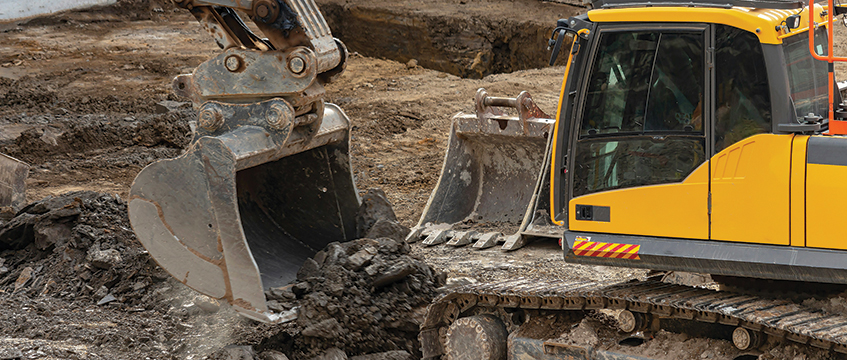Stuart Pemble considers a recent Court of Appeal decision on the Construction Industry Scheme.
Key point
- The Court of Appeal has confirmed that a non-liability direction can be made under the Construction Industry Scheme in relation to amounts previously covered by a liability determination.
The Construction Industry Scheme, which first came into being in 1972, has long been the bane of this humble construction law hack’s life. I find it overly complicated and incredibly confusing and I am immensely grateful to our brilliant team of tax colleagues who dig me and my clients out of CIS-shaped legal holes.
The CIS aims to reduce the risk of tax evasion by workers and companies in the construction industry. Contractors deduct money from payments otherwise due to sub-contractors. These deductions are treated as an advance payment towards the sub-contractor’s tax and national insurance contributions. In simple terms, the scheme attempts to avoid payments in cash to sub-contractors not being declared to HMRC.
Sub-contractors do not have to register for the scheme but, if they do not, tax is deducted at a higher rate (30%) than if they are registered (where the rate is 20%).
Sub-contractors can also apply to HMRC for gross payment status, which means contractors do not have to deduct the tax element of any payments because HMRC is satisfied the sub-contractor will account for tax properly.
What happens if the contractor does not deduct (or insufficiently deducts) the tax and NI?
In that instance, the contractor should still account to HMRC once it realises its mistake. If it does not, HMRC can issue a liability determination under regulation 13 of the Income Tax (Construction Industry Scheme) Regulations 2005 of the amount the contractor has to pay.
Separately, regulation 9 allows HMRC to issue a non-liability direction that the contractor is not in fact liable to pay the amounts that should have been deducted. This tends to be applied where the sub-contractor has accounted to HMRC for its tax and NI (which avoids double recovery by HMRC) or where the contractor tried to comply with the regime and has made an innocent mistake which would leave it out of pocket.
The latest case
It was the potential tension between these two regulations which the Court of Appeal had to consider in R (on the application of Beech Developments (Manchester) Ltd and others) v Commissioners for HM Revenue and Customs [2024] EWCA Civ 486; [2024] PLSCS 92. The appellants, referred to in the judgment as Beech, were six companies in the same group as BCPL. BCPL was a main contractor on a number of construction projects and operated the CIS regime on its sub-contracts. However, BCPL was also a sub-contractor of the Beech companies. Beech did not operate the CIS regime between them and BCPL.
When this came to light following an enquiry from HMRC, BCPL applied for gross payment status, which was granted from 13 August 2018. From that date on, Beech did not have to deduct tax and NI from their payments to BCPL.
However, HMRC also made a liability determination for the tax and NI that Beech should have deducted during the tax years 2016 to 2019. By the time the case was heard by the Court of Appeal, that was calculated as £2.5m plus interest. In 2021, Beech applied to HMRC for a non-liability direction that they did not have to pay the tax because BCPL had, in fact, accounted to HMRC for the same amount.
HMRC refused to grant that declaration and Beech judicially reviewed that refusal. The case was heard by Fordham J at first instance ([2023] EWHC 977 (Admin)). The judge, relying on a number of decisions, including North Point (Pall Mall) Ltd v HMRC [2021] UKFTT 0259 (TC), held that the CIS regime did not give HMRC the ability to issue a non-liability declaration after a liability determination had been made. Beech appealed that finding.
The appeal
Falk LJ (with whom Underhill and Lewison LJJ agreed) allowed the appeal. The key wording in regulation 13(3) (on which HMRC and Fordham J had relied) was that a “determination under this regulation must not include amounts in respect of which a direction under regulation 9… has been made and directions under that regulation do not apply to amounts determined under this regulation”.
While acknowledging that she could see the merit of Fordham J’s interpretation, Falk LJ pointed that the wording did not do what HMRC argued it did. While the first limb of regulation 13(3) makes it clear that a liability determination cannot include amounts already subject to a non-liability direction, the second limb does not provide the opposite: it does not say that non-liability directions may not or must not be made in respect of amounts already subject to a liability determination. Further, while non-liability directions were final, other provisions in regulation 13 allow liability determinations to be adjusted upwards or downwards (including a determination of nil). Falk LJ also felt that if it had been intended that regulation 13 would remove the power to make a non-liability direction, regulation 9 would have referred to that fact. There is no such reference.
The decision allows for a fairer and more logical approach to the CIS. In particular, it avoids double recovery of taxes where both contractor and sub-contractor would otherwise have to pay the same tax to HMRC.
Stuart Pemble is a partner at Mills & Reeve









